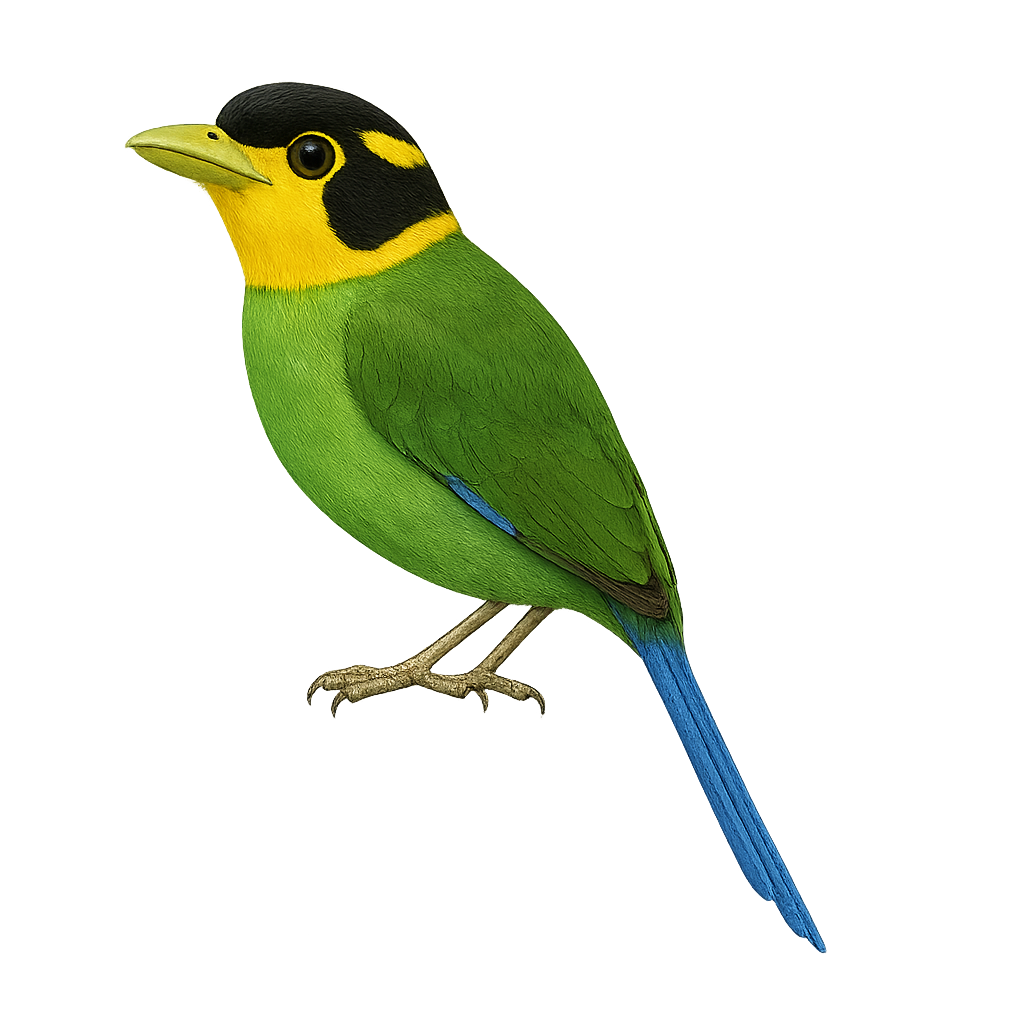Your wildlife photography guide.
Explore the long-tailed broadbill in detail, study its behavior, prepare your shots.
Where to observe and photograph the long-tailed broadbill in the wild
Learn where and when to spot the long-tailed broadbill in the wild, how to identify the species based on distinctive features, and what natural environments it inhabits. The WildlifePhotographer app offers tailored photography tips that reflect the long-tailed broadbill’s behavior, helping you capture better wildlife images. Explore the full species profile for key information including description, habitat, active periods, and approach techniques.
Long-tailed Broadbill
Scientific name: Psarisomus dalhousiae

IUCN Status: Least Concern
Family: EURYLAIMIDAE
Group: Birds
Sensitivity to human approach: Suspicious
Minimum approach distance: 10 m
Courtship display: April to June
Incubation: 17-19 jours
Hatchings: April to July
Habitat:
humid tropical forests, montane forests, wooded areas
Activity period :
Primarily active during the day, with peak activity in the morning and late afternoon.
Identification and description:
The Long-tailed Broadbill, or Psarisomus dalhousiae, is a fascinating bird known for its colorful plumage and long tail. It features a striking blue head, contrasting with its bright green back and yellow belly. This bird primarily inhabits the humid tropical forests of Southeast Asia, including India, Nepal, Thailand, and Malaysia. It is often seen in small groups, moving through the canopy in search of insects and fruits. The Long-tailed Broadbill is a diurnal bird, most active in the morning and late afternoon. Although generally not very shy, it can be suspicious when faced with potential threats. Its ability to blend into the dense foliage of its habitat sometimes makes it difficult to spot.
Recommended lens:
400 mm – adjust based on distance, desired framing (portrait or habitat), and approach conditions.
Photography tips:
To photograph the Long-tailed Broadbill, it is advisable to use a telephoto lens of at least 400 mm to capture detailed images without disturbing the bird. Look for it early in the morning or late afternoon when it is most active. Be patient and discreet, as although it is generally not very shy, it can be suspicious. Focus on canopy areas where it often feeds. Use a tripod to stabilize your camera and adjust your camera settings for the low-light conditions of tropical forests.
The WildlifePhotographer App is coming soon!
Be the first to explore the best nature spots, track rutting seasons, log your observations, and observe more wildlife.
Already 1 449 wildlife lovers subscribed worldwide

